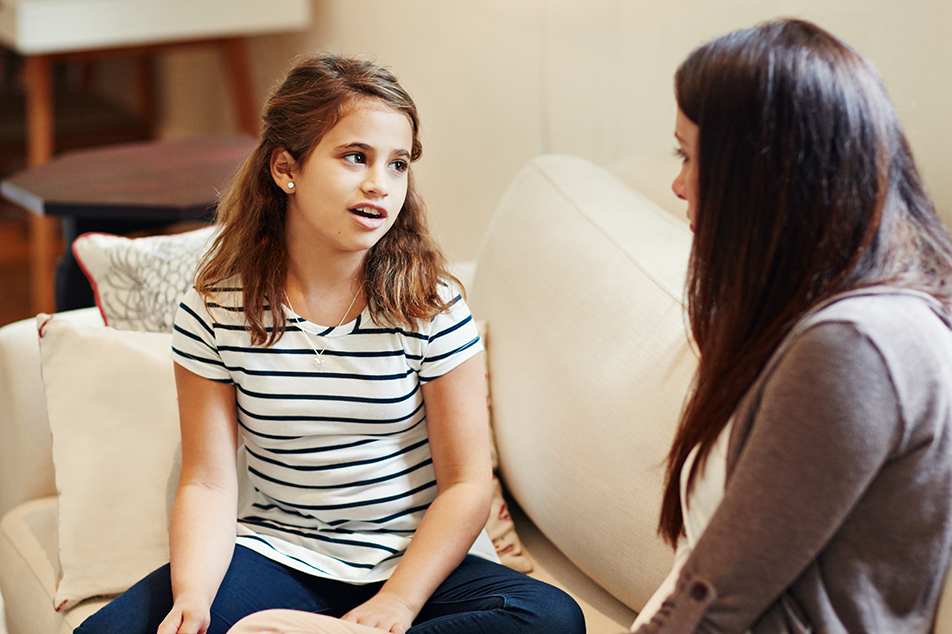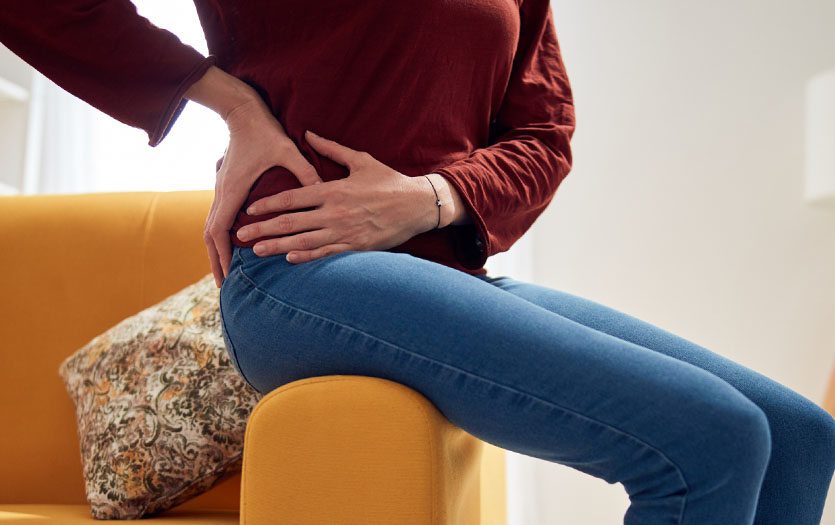
For so many parents, deciding when and how to talk to their daughters about the changes that their bodies will go through as they move through puberty is difficult. In an effort to provide you with more tools for these critical talks, we sent a list of questions to Shelly Boone, CNM, FNP-C, PPG – OB/GYN. Here, she shares her advice on navigating the road ahead and creating a healthy dialogue between you and your child.
When is a good time/age to start talking about puberty with my daughter?
I believe the earlier the better. This can be a progressive conversation and depends somewhat on the physical changes you may see taking place in your daughter. Of course, some girls start changing at a very young age and may need training bras or undershirts at eight or nine years old. While other girls may not have any physical changes until age 10 or 11.
Personally, with my daughter, we started having conversations about body change when I started noticing changes in her friends. This was several years before she started changing, but I wanted her to have the expectation that these were changes that would eventually happen to her as well.
Also, while some girls are very excited and even eager about the changes that will happen in their body, others are embarrassed and/or self-conscious about what is or will be happening. Having their mom, grandma or female mentor make this a conversation that is safe and normal will allow girls to have a resource that they can trust and glean information from as they have questions that arise.
Pubescent changes can take place very quickly or gradually over time. It can make girls feel like they are losing control over their body. It may hurt in places they have never noticed before. They will have vaginal discharge start, which is also different. If these girls do not understand that these are expected, normal changes, it’s easy for them to become concerned that there is something wrong with them.
What are some signs that my daughter might be approaching puberty?
Almost always, the first changes we see take place are the development of breast buds. This is when the pinkish area that has always been flat against their chest begins to be slightly raised (puffy). As this change continues, a firmness will develop under the nipple, and over a span of months and years, the breast will develop from this. This can be quite tender/painful for some girls. Often, a training bra or sports bra can help with comfort. This is followed by the growth of underarm and then pubic hair, and then, about a year after hair starts to grow, we expect to see a period.
How can I give her the necessary information without making it uncomfortable/awkward?
Again, I want to emphasize that the best approach is a progressive one. You don't want to be dumping information on her. That can be overwhelming! Instead, try to share small portions of information spread out over months or years. For example, we know that breast buds form usually about two years before periods start. Therefore, have a conversation about body changes starting with just breast changes.
In my experience, these types of conversations are best received when a woman is alone with the young girl. If you feel nervous or awkward about these conversations, it may help to practice with a peer before talking with the girl. Try to normalize this conversation as much as possible. These changes are expected, normal, and nothing to be ashamed of. It may be helpful to stress the excitement of "growing up" or turning into a young woman.
What if the topic “grosses her out”?
I chuckle when considering this question because I have dealt with this with my daughter. Even just this past year my 10-year-old has been mortified at the possibility of changing. She has said many times over the year that she wanted to stay just the way she was and has been resistant to any attempts at conversation from her "midwife mother" (cue eye roll).
This past spring, it was time for her to start wearing a training/sports bra. I told her we could look online rather than shopping in a store, but she was even resistant to that idea. I finally told her that body changes were going to happen whether she wanted them to or not. It was definitely time for her to start wearing something daily and she could either pick out something that she liked or I could do it for her.
Bottom line, I believe that for girls who are struggling to come to terms with body changes for whatever reason, you have to make it normal and real (ready-or-not!). Speak matter-of-factly and frankly in a private discussion. This doesn't have to be a battle. Remind your young lady that there is nothing happening to her body that hasn't happened to every other woman since the beginning of time.
What is the best way to approach the topic of bras?
Once the nipple starts to change and breast buds begin to appear, girls are often more comfortable with wearing something under their shirts. It prevents chafing and offers a bit of support. As I mentioned before, there are many online options so that your girls don't have to shop in public.
How can parents make the transition to wearing a bra more comfortable?
I have found that sports bras seem to be more comfortable for young girls than a training bra. They don't feel quite as restrictive and, frankly, they are cuter and a little more desirable to wear. They tend to have wider straps and a little more coverage area so that it isn't as noticeable.
When is the best time to discuss pregnancy?
This is another progressive conversation. It can start at a very young age, as they start to notice pregnant bellies. This is often simply done by saying that a baby is living in a woman's body. Certainly, a more uncomfortable conversation is when daughters start to ask how the baby got in the woman's body, but I don’t think this topic should be cast aside, even if we feel uncomfortable answering it. As you start to divulge information, it’s important to use the appropriate terminology (vagina, penis, ovaries, uterus, etc.).
How can I cover the topic without overwhelming my daughter?
This might be a conversation to practice with a peer first so that you can be as comfortable as possible with discussing these topics. Answer questions as they come up. By the time they are in late elementary school, girls should have a working idea of how babies get into a woman's body. Many small, progressive conversations are often more comfortable for the woman and more easily absorbed by the girl rather than a long information overload all at the same time.
Are there any resources you recommend?
There is an old book that I kept on my kids' bookshelf called "Where Do Babies Come From?" by Margaret Sheffield. It was as accessible as every other book and if they chose for us to read it to them, we read it. Honestly, even though I had grown up with the same book as a child, I was uncomfortable reading it out loud at first. However, it got me used to speaking to my children using proper terminology and they got used to hearing the terms in storybook format. It has pictures of boys, girls, men and women who are undressed, but it feels very appropriate. It scratches the surface of sex and also puberty. I really like this resource.
Another good one for prepubescent girls (and boys) is “Preparing for Adolescents” by Dr. James Dobson. This is written to the kids themselves and covers all of the expected physical changes but also dives into the emotional upheaval that can occur with all the hormonal changes that take place. If your kids aren't into reading, it may be a good resource for you so that then you can share information with them in pieces as opportunities arise.



